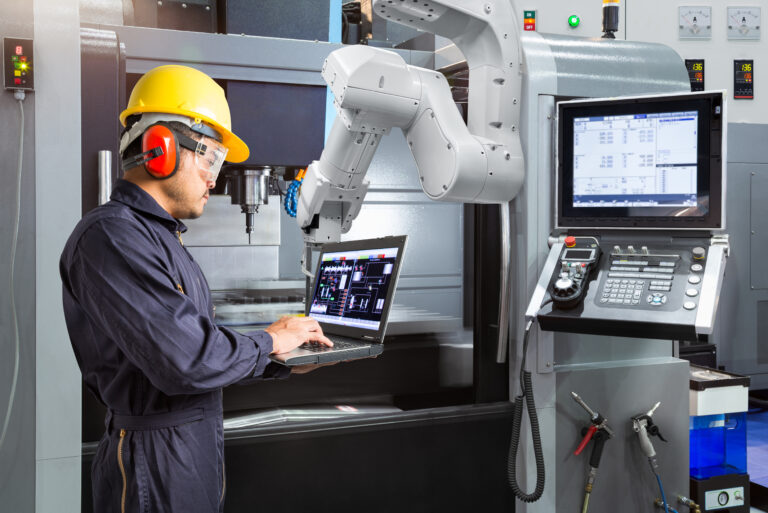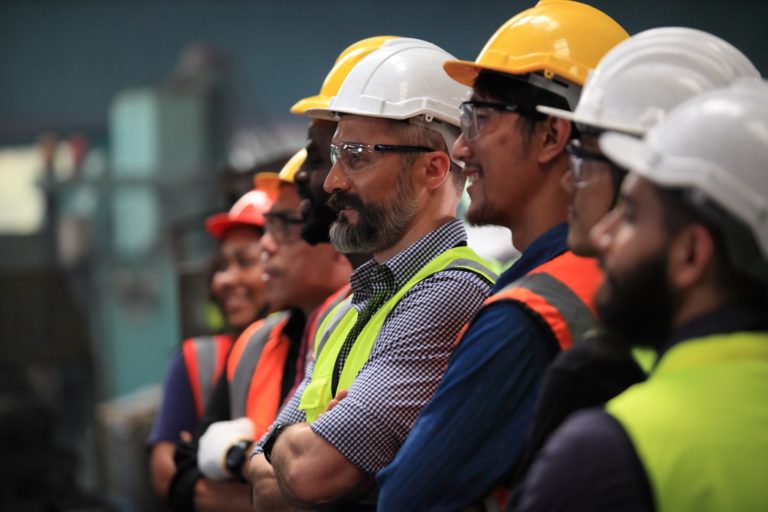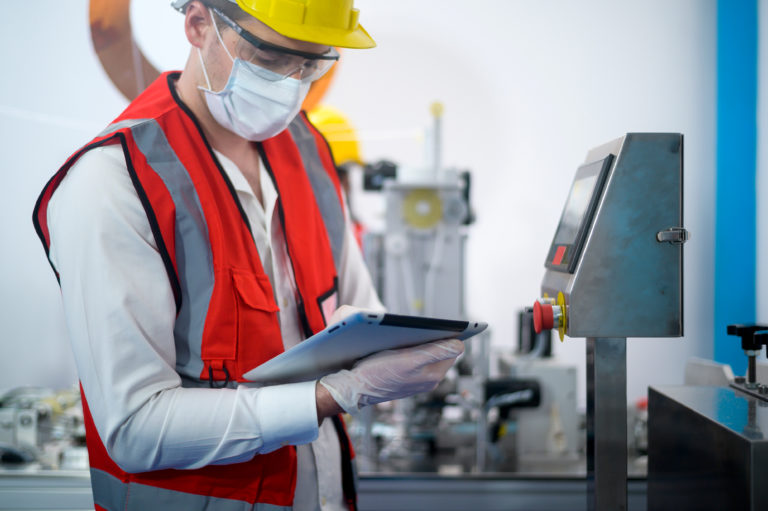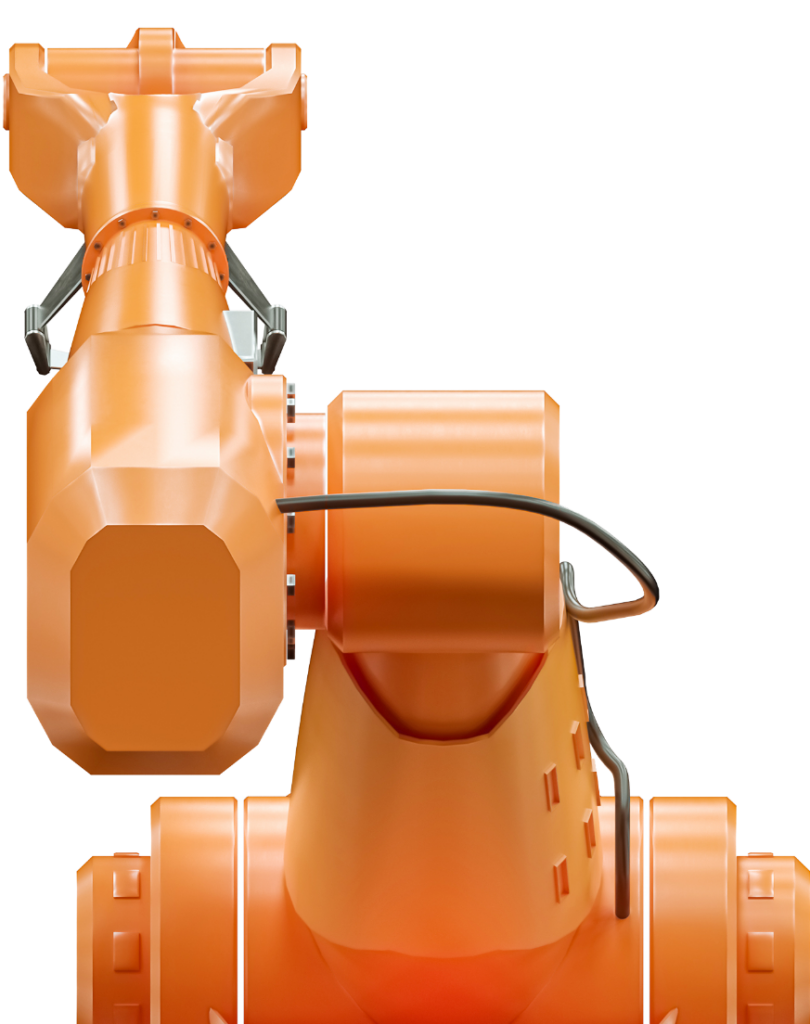By providing a high-quality, consistent product you build brand loyalty and reputation, on which most manufacturers pride themselves. But, quality costs time, money, and staffing resources. What’s more, in many industries (e.g. food and beverage, pharma, automotive/aviation), quality is critical to safety so you can’t afford to make inspection errors.
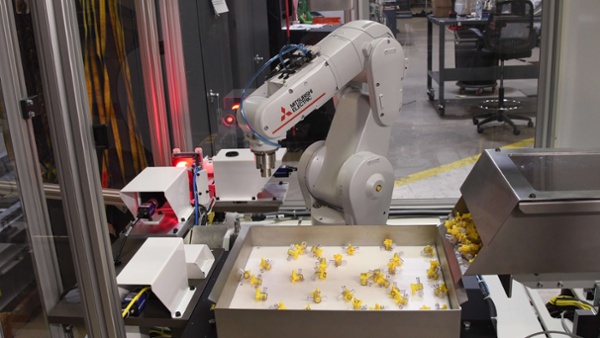
You may have considered or even adopted automation into your production lines as a way to improve manufacturing methods and product quality (among other benefits), but did you know automation technology can improve your testing and inspection work too? Read on to learn how.
Automation and “smart” technology advantages for quality inspection
Robots and other automated equipment offer several advantages over their human counterparts for quality inspection and control. Initially, installation, programming, and configuration, take time, but they’re usually offset by things like:
Data collection and analysis for continuous improvement. Most new inspection instruments include onboard computers to gather and store data about the work they do. This can include cycle time and quantity, part measurements, visual data, and more. They can also do statistical analysis on that data to identify trends and patterns of errors like incorrect feature placement or dimensions and surface defects. Not only is more data gathered, the available computing power can “crunch” more numbers faster and without risk of human errors in computation. More data and faster math means expanded opportunities to find, correct and even avoid problems quickly.
Machine-based precision and performance. If you use high-resolution and properly calibrated instruments, define the relevant specifications, and determine what constitutes a “defective” part for pass/fail decisions, automated inspection can help you avoid variations and errors common to human inspection and analysis. In other words, given the right parameters, machines just offer higher levels of repeatability and reliability. They can run the same program indefinitely until it’s changed, but they’re also flexible enough to reprogram and set up for a different part or application quickly and easily.
Easier in-line inspection. Because automated inspection is faster, rather than sampling finished items, it may be reasonable to build quality checks into the production line without bogging things down. And if it’s combined with automated manufacturing equipment, adjustments can be made in real time or before an entire batch is finished (which means fewer scrapped or reworked parts). As an example, consider inspection equipment that checks parts as a robot unloads them from a CNC machine. If the inspecting robot finds dimensions are trending away from the original set-up due to tool wear, the system sends this information to the machine to change tool positions.
Another option is to set up a system to hold failed parts out of the rest of the batch so they don’t go on to the next step of production. As an article in the May 2019 issue of Quality Magazine notes, “smart sensors offer built in processing to carry out tagging and tracking of moving parts. This allows pass/fail decisions to be stamped by the time and position of the part on a conveyor for downstream coordination with ejection or sorting hardware.”
ROI and falling prices. Any automation equipment requires an investment of time and capital. Fortunately, as demand continues to grow for faster and “smarter” manufacturing, the equipment and the technology behind it gets more affordable. There are many types of robots and automation equipment, including collaborative robots (i.e. cobots), traditional industrial robots, as well as three-axis/Cartesian and SCARA models. Depending on the required application, any of these can be suitable for quality inspection. Working with an experienced automation integrator is a good way to find the best type of equipment for your needs, with an eye to your return on investment.
How does it work?
What makes computerized robots especially suited to quality inspection is their ability to analyze large quantities of data and make decisions based on it. When fully integrated into production, they can even send signals to the manufacturing equipment to make real-time changes such as adjusting speeds, tool angles or pressures to correct the problems.
Many systems incorporate forms of artificial intelligence and “deep learning” in which the onboard computer stores reference examples (i.e. dimensions, images, tolerance values) of both pass and fail parts and features. As data is gathered, the computer compares it to the stored data and “decides” if the part or feature falls within the acceptable range. Over time, some systems can even become adept at recognizing more and more minor variances and suggest corrections earlier in production. In these cases, the inspection machine is “learning” based on its past experience.
Teachable robots equipped with grippers and instrumentation perform inspection in a variety of ways. Some common examples are:
- parts pass by a camera or scanner station on a conveyor
- an arm with a camera or sensor moves around a stationary part
- robot-assisted cutting or sampling of raw material for testing
- laser and 3D scanning (which capture multiple data points for analysis)
- high-speed/high-frame cameras
- “Smart” vision sensors and cameras
As technology improves, it seems the only limit is the human imagination. There are many creative ways to check quality with automated equipment, for example, mobile robots or camera-equipped drones can even climb or fly inside large parts and equipment to inspect them.
Automated quality inspection in action
Both in-line and offline applications can be automated, including surface inspection, inner and outer dimensions (as well as CMM and touch probe metrology applications), inside cavities and part features to verify shape, depth, smoothness, non-contact 3D imaging, and even verification of patterns or colors. Here are some examples to help you visualize what might be possible in your facility:
- Medical component inspection
- End-of-line tester, including visual and mechanical inspection
- Automotive exhaust air leak tester
- Automated plasma cutter for test samples
- Robotic arm with parallel gripper for automated metrology (including set up)
- Scanner and camera inspection
- “Training” a collaborative robot in a dedicated cell (including data displays)
- Rotating robotic arm moving a part in front of static 3D scanner
- Robot with gripper and laser scanner moving around a stationary part
Whether you want to add inspection capabilities to your existing automated processes or need a way to make inspection faster and more reliable, Force Design can help. We’d love to hear your ideas!
